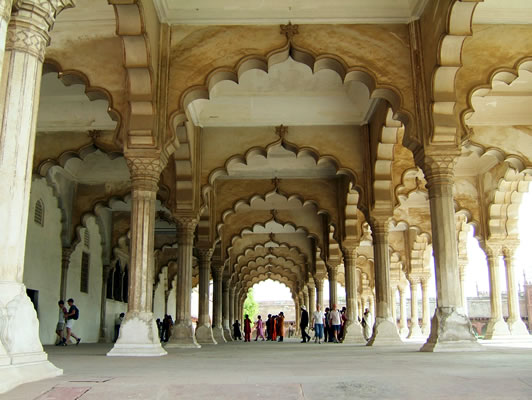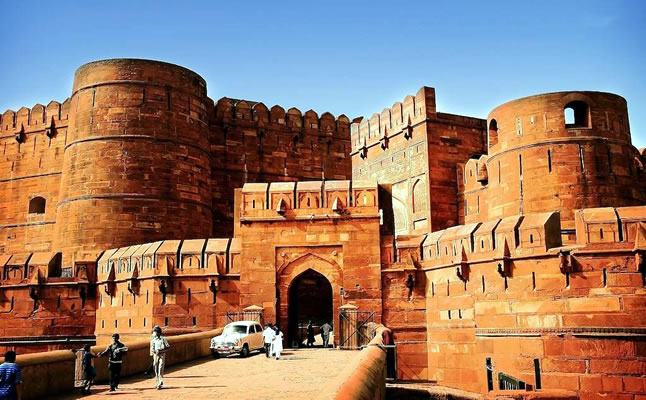Babur’s Baoli And Overhead Tanks
(Water-works)(1527-73 A.d.)
Hindi Version |
|
This is the spot where Babur’s Baoli and water-works were situated. Babur recorded in his memoirs that he built a stone baoli/(Step-Well) in Agra Fort. In had three-storeys. The bullock turned the water-wheel (Rehant) for raising water. In the second storey, all these opened on the stairs which descended down to water. It was completed after the battle of Khanwa in 1527 A.D. and Babur placed there an inscription. A well was attached to it at a higher level and water from the Baoli was first raised to this well. A ‘Rehant’ also worked in it "by means of which water is carried along the ramparts to the high garden", as Babur recorded. This was altered when Akbar built his palaces (1565-1573). It was necessary to use a third ‘Rehant’ to raise water. Therefore, a three-storeyed water-pavilion was erected on the mouth of the second well and three overhead tanks were built on its roof. Water from Babur’s Baoli was conducted into these tanks. The northern wall has 27 pipe-mouths (9 in 3 series) with circular Persian tablets above them denoting the Hammams, canals and tanks to which the pipes conducted water respectively. This water-works was thus fully controlled. The plan was again altered when Shahjahani-Mahal was built, massive walls were raised in the middle of Babur’s Baoli and well, and the rooms were closed up. The Baoli became defunct. Alternate arrangement of watersupply to the overhead tanks was made and they were again use dwith relaid pipes leading to the new palaces. Babur’s Baoli is now buried in the basement apartments, just below this spot and is only partially accessible. The overhead tanks with inscribed tablets have survived intact. |




